It’s one of science’s biggest unanswered questions: If there is life beyond Earth, where is it?
While you might think the answer is “far, far away,” surprisingly, it could be much closer to home than we thought.
Our own solar system is now home to nearly 300 moons, some of which could have the perfect conditions for life.
But which are the most promising candidates?
From Jupiter’s moon Europa to Saturn’s satellite Enceladus, this chart reveals the moons most likely to host aliens.
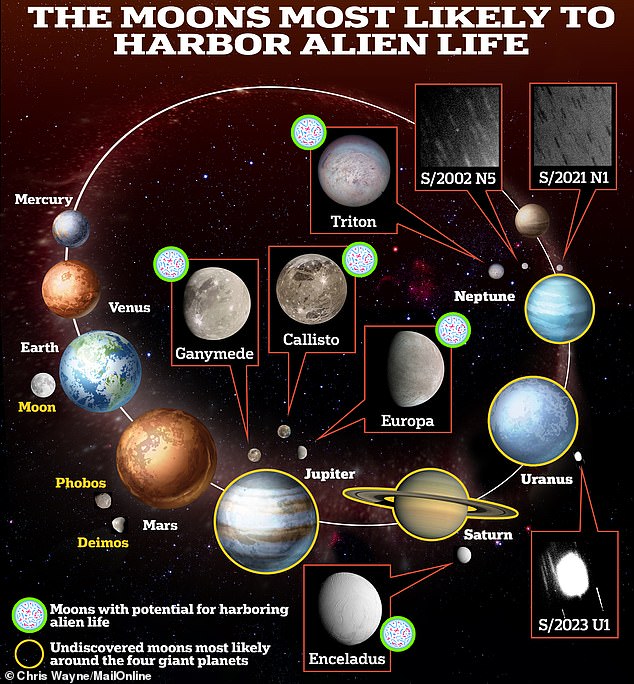
Moons, also called “natural satellites”, are defined as such when they orbit a planet. There are just under 300 moons that we know of in our solar system, but the best candidates for life include Europa, Enceladus, and Callisto.
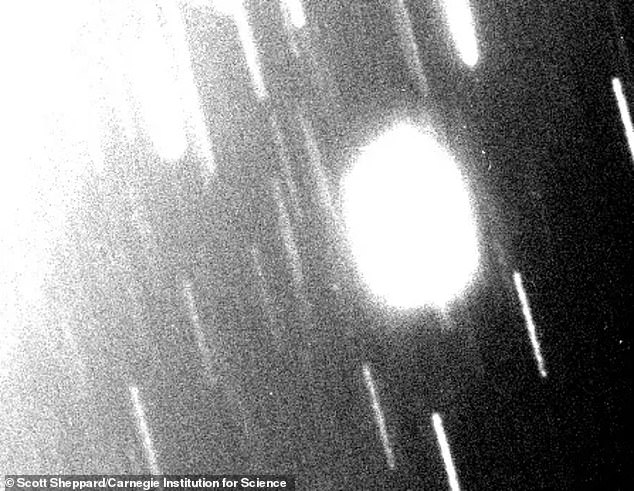

Scientists have just discovered three new moons around Uranus and Neptune. The photo shows the moon of Uranus, provisionally called S/2023 U1. Uranus is just outside the field of view at the top left, as seen by the increased scattered light.
The planets most likely to harbor life, experts say, include Saturn’s moon Enceladus, which spews plumes of water from a hidden liquid ocean.
Jupiter’s moon Europa has CO2 on its surface (on Earth, a byproduct of cellular function), while Jupiter’s largest moon Callisto may have a salty ocean beneath its surface, a potential habitat for life.
Jupiter’s Ganymede, the largest moon in the solar system, is believed to have interacting water and rocks, key to the development of life.
And Neptune’s moon Triton is known to be geologically active and has an atmosphere composed primarily of nitrogen, just like Earth.
Scientists recently revealed that they had found two more moons: one around Uranus and two around Neptune.
Surprisingly, there are still “thousands” more moons waiting to be discovered in our solar system, according to NASA.
Dr. Robert Massey, deputy chief executive of the Royal Astronomical Society, agrees with NASA that there are many more moons that we don’t know about.
But they are all likely to be much smaller than the candidates mentioned above: a few hundred or even tens of kilometers in diameter.
“There are likely to be undiscovered moons around the giant planets – Jupiter, Saturn, Uranus and Neptune,” Dr Massey told MailOnline.
“But we can be sure that we have discovered all the largest moons in the solar system around other planets.
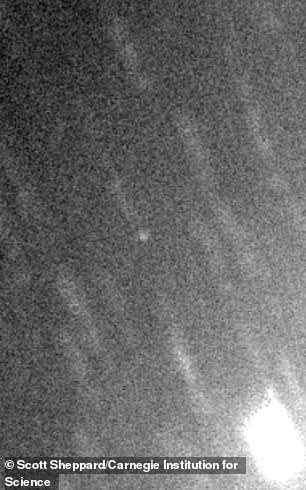

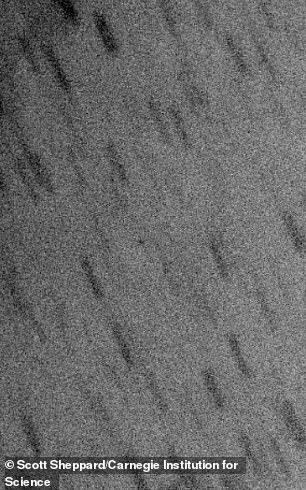

These images show the two newly found moons around Neptune, provisionally named S/2002 (left) and S/2021 N1 (right). S/2002 N5 (left) is somewhat bright and that is why it is clear in the image, but with S/2021 N1, the moon is very faint. It can practically be seen as a black point of light right in the center of the image. This one is very difficult to see as it is very faint, the faintest moon ever found around any planet.
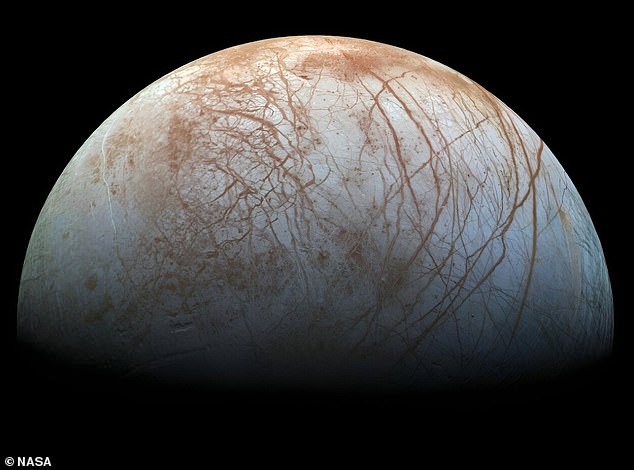

Pictured is Jupiter’s moon Europa, where an ocean hidden under miles of ice is considered a prime candidate for extraterrestrial life. Scientists have found carbon dioxide (CO2) on the surface of Europa and the next step is to determine where it comes from
“The moons discovered now are usually much smaller (no more than a few kilometers in diameter) and therefore much fainter, so larger and more sensitive telescopes are needed to find them.”
Last week, scientists found three new moons: two orbiting Neptune and one orbiting Uranus.
However, Dr Massey believes it is “extremely unlikely” that any of the three newly discovered moons are candidates for hosting extraterrestrial life, because they are too small to have an atmosphere and are not thought to have subsurface oceans.
Generally, the smaller the moon, the less likely it is to host life, because to have life it would need to have an atmosphere.
Martin Hendry, professor at the University of Glasgow’s school of physics and astronomy, told MailOnline: “If a moon is too small, its gravity is not strong enough to retain an atmosphere, so there is nothing that can breathe life.”
“If the Moon is really small (for example, small enough that we haven’t detected it yet), then the tidal forces will almost certainly be strong enough to tear the Moon apart.”
Even with the most powerful ground-based telescopes, many of the moons we don’t know about are too faint to see.
“Planets and moons don’t shine on their own: they simply reflect sunlight,” Professor Hendry said.
«For a moon that orbits quite far from a planet that is itself very far from the sun, there is not much sunlight to reflect.
“That’s why you need such powerful telescopes to see them and why they haven’t been discovered until now.”
Dr. Scott S. Sheppard, an astronomer at the Carnegie Institution for Science who found the new moons around Uranus and Neptune, does not believe there are still “thousands” of moons left to find as NASA suggests.


Enceladus, Saturn’s sixth largest moon, is a frozen sphere just 313 miles in diameter (about one-seventh the diameter of Earth’s moon). It is shown in this image captured by NASA’s Cassini spacecraft.
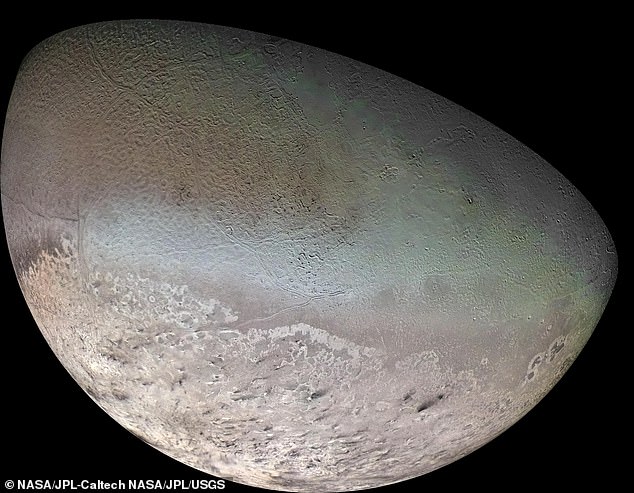

Neptune’s moon Triton (pictured) is known to be geologically active and has an atmosphere composed primarily of nitrogen, just like Earth.
But he agreed that we currently don’t have the ability to discover them because they are “too small and faint for current technology to see.”
“Our current largest telescopes in the world are still limited in how deep they can image efficiently, which is why we have those size limits for moon discovery,” he told MailOnline.
‘All of these unfound moons are small, ranging in size from just a few to tens of kilometres, so they would not be ideal for life today.
‘But they could have the ingredients for life on their surfaces, as they are thought to be organic-rich ice on their surfaces.
“These moons are the remains of a once-larger population of objects that were incorporated into the formation of the planets, so studying these moons gives us a better understanding of what went into the formation of the planets.”
Their three new discoveries bring the total of known moons of Neptune to 16, while Uranus now has 28, although this figure is still modest compared to the two largest planets in the solar system.
Jupiter has 95 moons and Saturn has a whopping 146, and the number increases periodically.
Of course, the likelihood of life outside Earth increases when you consider planets and moons outside our solar system, known as “exoplanets” and “exomoons.”
NASA believes there are billions of exoplanets, a certain proportion of which surely have Earth-like conditions for life to thrive.
